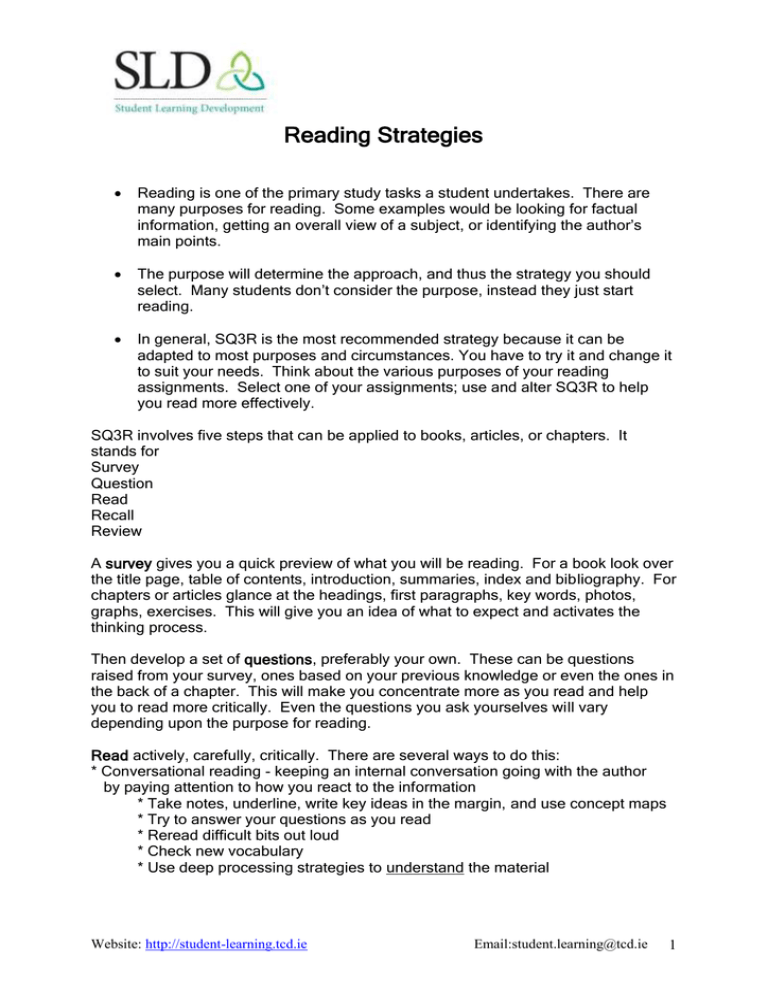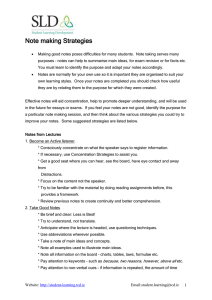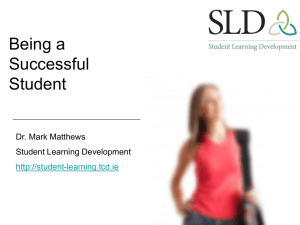Reading Strategies- ( MS Word 108 kB )
advertisement

Reading Strategies Reading is one of the primary study tasks a student undertakes. There are many purposes for reading. Some examples would be looking for factual information, getting an overall view of a subject, or identifying the author’s main points. The purpose will determine the approach, and thus the strategy you should select. Many students don’t consider the purpose, instead they just start reading. In general, SQ3R is the most recommended strategy because it can be adapted to most purposes and circumstances. You have to try it and change it to suit your needs. Think about the various purposes of your reading assignments. Select one of your assignments; use and alter SQ3R to help you read more effectively. SQ3R involves five steps that can be applied to books, articles, or chapters. It stands for Survey Question Read Recall Review A survey gives you a quick preview of what you will be reading. For a book look over the title page, table of contents, introduction, summaries, index and bibliography. For chapters or articles glance at the headings, first paragraphs, key words, photos, graphs, exercises. This will give you an idea of what to expect and activates the thinking process. Then develop a set of questions, preferably your own. These can be questions raised from your survey, ones based on your previous knowledge or even the ones in the back of a chapter. This will make you concentrate more as you read and help you to read more critically. Even the questions you ask yourselves will vary depending upon the purpose for reading. Read actively, carefully, critically. There are several ways to do this: * Conversational reading - keeping an internal conversation going with the author by paying attention to how you react to the information * Take notes, underline, write key ideas in the margin, and use concept maps * Try to answer your questions as you read * Reread difficult bits out loud * Check new vocabulary * Use deep processing strategies to understand the material Website: http://student-learning.tcd.ie Email:student.learning@tcd.ie 1 Strategies for understanding would include looking for the main ideas and attempting to integrate them into your existing knowledge, to look for relationships, links, or patterns and to identify the underlying meaning. These strategies help to consolidate, and thus retain, the information learned. You must also recognise critical details the author uses to support his/her argument, such as facts or examples. If you are reading to memorise, you will want to use recitation, copying and mnemonics. Once you think you understand what you are reading, evaluate it is the information provided accurate, limited, biased, and logical? This is especially important if you are reading for the purpose of analysis and critique. Try to recall the ideas you have learned in your reading; in your own words try to describe the author’s main ideas and argument. If the reading is complicated more frequent recall will probably be needed. You review to see if you have answered all your questions and also to check how well you have recalled the material. Think of it as self-examination. Some students combine the recall and review steps; others broaden it and add a re-read step between recall and review. It is a flexible approach to reading. Remember to monitor and evaluate if your reading strategy is effective for you and for your purpose! It is not a set of rules but suggestions for you to try out. You may want to use support and self-management strategies in conjunction with reading strategies. Website: http://student-learning.tcd.ie Email:student.learning@tcd.ie 2


